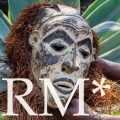Researchers from Kyoto Imperial University, which is now Kyoto University, had taken the remains early in the country’s Showa Era (1926-1989) from the Mumujanabaka tomb built in the middle ages in the Okinawan village of Nakijin.
The descendants of those in the tomb filed a lawsuit in 2018 demanding that Kyoto University return the remains. Kyoto District Court and Osaka High Court rejected the demand but called on relevant organizations to hold discussions to resolve the issue.
Comment Nathan Sydenham (University of Edinburgh)
- This repatriation is akin to internal repatriations like those of First Nations. The case of Okinawa parallels that of the Ainu, as it represents Japan’s efforts to dissolve the Ryukyu Kingdom (officially in 1879) and assimilate its Indigenous populations. The American occupation adds a tragic layer to this history for Ryukyu ancestors.
- The return of these remains from institutions like Kyoto Imperial University symbolises a cultural shift towards recognising Indigenous populations in Japan.
- However, Japan still lags behind the likes of Māori and Aboriginal and Torres Straight Islander cultures, with much of the progress stemming from Indigenous communities advocating to international organisations.
- This example demonstrates that the typical (de)colonial models are not necessarily universally applicable and can offer valuable case studies for other regions to examine.


